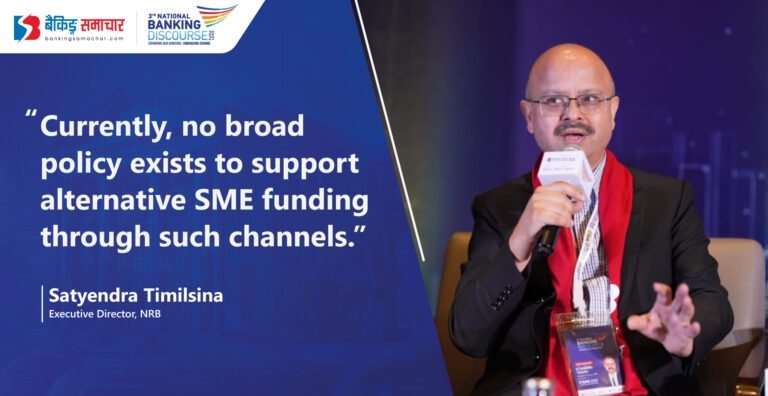Kathmandu – The importance of Small and Medium Enterprises (SMEs) in driving economic growth hardly needs reiteration. SMEs contribute approximately 22–23% to Nepal’s GDP, and their role in employment generation is also significant. When discussing financial access for SMEs, it’s crucial to analyze both demand and supply dimensions.
On the supply side, the policy framework of Nepal Rastra Bank (NRB) is actively working to improve access to finance and solve financing challenges in the SME sector. However, understanding credit demand, its volume, and how to stimulate it involves a different set of considerations.
Recent studies reveal that a significant number of Micro, Small, and Medium Enterprises (MSMEs) still lack formal financial access and remain engaged in the informal borrowing market. Despite this, there doesn’t seem to be a serious problem from the demand side.
NRB has long recognized the importance of this sector and has prioritized enhancing financial access and credit availability to SMEs. Historical data show that since 2017, NRB had been running dedicated programs to ensure bank credit to priority sectors, including SMEs. At one point, up to 8–10% of total bank lending was directed toward these priority sectors under mandatory provisions.
Even after phasing out those legacy mandates, NRB has introduced new sectoral credit targets. By 2084 B.S. (2027 A.D.), commercial banks are required to allocate a minimum of:
- 15% of their credit portfolio to agriculture,
- 10% to energy, and
- 15% to MSMEs.
Currently, approximately 10% of the total NPR 5.5 trillion loan portfolio is going to the SME sector. This translates to roughly NPR 500 billion in SME loans. The definition of SMEs is based on the Industrial Enterprises Act, which classifies businesses according to capital size. According to NRB’s operational policy, only loans up to NPR 20 million are counted under the SME category.
While NRB hasn’t mandated credit limits for development banks and finance companies (Class B and C institutions), it actively encourages lending in agriculture, energy, tourism, and SMEs. The central bank has made significant efforts to promote this sector.
It is important to note that loans provided by financial institutions are funded by public deposits. Thus, NRB insists that these institutions should not put depositors’ money at excessive risk. Banks have the autonomy to assess risk and disburse credit accordingly.
To encourage SME financing, NRB has imposed a 2% cap on interest rate premiums for loans below NPR 20 million. As a result, banks are now allowed to lend such loans at a maximum spread of 2% over their cost of funds. This means loans under NPR 20 million are expected to carry lower interest rates than standard commercial loans.
Additionally, when banks lend up to NPR 20 million to SMEs, they are only required to maintain a 75% risk weight, which reduces the capital requirement and enables credit growth. NRB’s policies clearly show a consistent effort to incentivize and de-risk SME lending.
Out of approximately 1.9 million loan accounts in Nepal, over 90% involve loans of NPR 10 million or less. While the overall Non-Performing Loan (NPL) ratio of the banking sector stands at 5.2%, the NPL for loans below NPR 10 million is just 4.3%, indicating no major issue in SME loan performance.
However, if SME financing is still not growing at the desired pace, it’s important to understand the underlying causes. SMEs need to primarily rely on banks and financial institutions for investment, although non-bank sources such as venture capital may also be used. While NRB facilitates formal financing, frameworks for non-banking financial channels are governed by Nepal’s Securities Board, and currently, no broad policy exists to support alternative SME funding through such channels.
(Based on the remarks by Executive Director Timilsina of Nepal Rastra Bank, delivered during the second session of the “Banking Discourse 2025” titled “Challenges in SME Credit Expansion: Innovative and Established Solutions and Our Preparedness”)



 About Us
About Us
Comment